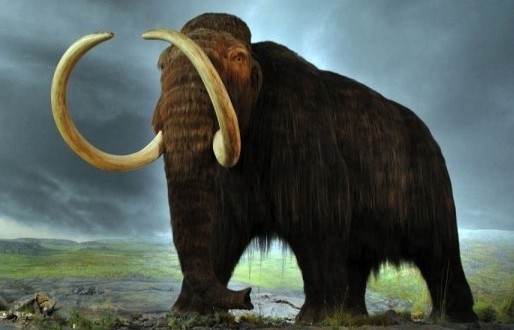The mass extinction of large mammals or megafauna during the last Ice Age was caused by humans and not climate changes, according to an Aarhus University study.
“Our results strongly underline the fact that human expansion throughout the world has meant an enormous loss of large animals,” Postdoctoral Fellow Søren Faurby said in a statement.
Was it due to climate change?
For almost 50 years, scientists have been discussing what led to the mass extinction of large animals (also known as megafauna) during and immediately after the last Ice Age.
One of two leading theories states that the large animals became extinct as a result of climate change. There were significant climate changes, especially towards the end of the last Ice Age – just as there had been during previous Ice Ages – and this meant that many species no longer had the potential to find suitable habitats and they died out as a result. However, because the last Ice Age was just one in a long series of Ice Ages, it is puzzling that a corresponding extinction of large animals did not take place during the earlier ones.
Theory of overkill
The other theory concerning the extinction of the animals is ‘overkill’. Modern man spread from Africa to all parts of the world during the course of a little more than the last 100,000 years. In simple terms, the overkill hypothesis states that modern man exterminated many of the large animal species on arrival in the new continents. This was either because their populations could not withstand human hunting, or for indirect reasons such as the loss of their prey, which were also hunted by humans.
First global mapping
In their study, the researchers produced the first global analysis and relatively fine-grained mapping of all the large mammals (with a body weight of at least 10 kg) that existed during the period 132,000–1,000 years ago – the period during which the extinction in question took place. They were thus able to study the geographical variation in the percentage of large species that became extinct on a much finer scale than previously achieved.
The researchers found that a total of 177 species of large mammals disappeared during this period – a massive loss. Africa ‘only’ lost 18 species and Europe 19, while Asia lost 38 species, Australia and the surrounding area 26, North America 43 and South America a total of 62 species of large mammals.
The extinction of the large animals took place in virtually all climate zones and affected cold-adapted species such as woolly mammoths, temperate species such as forest elephants and giant deer, and tropical species such as giant cape buffalo and some giant sloths. It was observed on virtually every continent, although a particularly large number of animals became extinct in North and South America, where species including sabre-toothed cats, mastodons, giant sloths and giant armadillos disappeared, and in Australia, which lost animals such as giant kangaroos, giant wombats and marsupial lions. There were also fairly large losses in Europe and Asia, including a number of elephants, rhinoceroses and giant deer.
Weak climate effect
The results show that the correlation between climate change – i.e. the variation in temperature and precipitation between glacials and interglacials – and the loss of megafauna is weak, and can only be seen in one sub-region, namely Eurasia (Europe and Asia). “The significant loss of megafauna all over the world can therefore not be explained by climate change, even though it has definitely played a role as a driving force in changing the distribution of some species of animals. Reindeer and polar foxes were found in Central Europe during the Ice Age, for example, but they withdrew northwards as the climate became warmer,” says Postdoctoral Fellow Christopher Sandom, Aarhus University.
Extinction linked to humans
On the other hand, the results show a very strong correlation between the extinction and the history of human expansion. “We consistently find very large rates of extinction in areas where there had been no contact between wildlife and primitive human races, and which were suddenly confronted by fully developed modern humans (Homo sapiens). In general, at least 30% of the large species of animals disappeared from all such areas,” says Professor Jens-Christian Svenning, Aarhus University.
The researchers’ geographical analysis thereby points very strongly at humans as the cause of the loss of most of the large animals.
The results also draw a straight line from the prehistoric extinction of large animals via the historical regional or global extermination due to hunting (American bison, European bison, quagga, Eurasian wild horse or tarpan, and many others) to the current critical situation for a considerable number of large animals as a result of poaching and hunting (e.g. the rhino poaching epidemic).
Agencies/Canadajournal

 Canada Journal – News of the World Articles and videos to bring you the biggest Canadian news stories from across the country every day
Canada Journal – News of the World Articles and videos to bring you the biggest Canadian news stories from across the country every day

